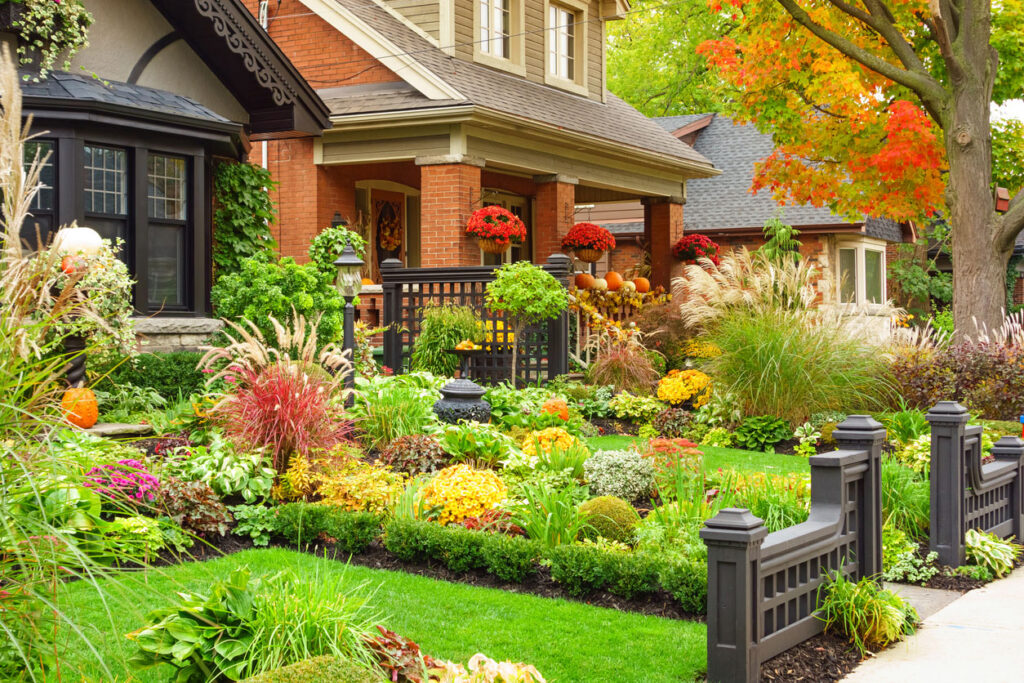
Now that your summer blooms are beginning to fade out, it’s a perfect time to incorporate plants for fall color. Here a just a few of our favorite fall plants that we’re sure you’ll love too:
Asters
When the blooms of many summer perennials are fading, the fall-blooming perennial aster is at its best. Perennial aster can beautify your existing flower beds and can also make excellent cut flowers for indoor arrangements. Asters bloom with loads of daisy-like flowers of white, pink, fuchsia, or lavender, so there’s bound to be a variety for every taste. Plant in areas of full sun to part shade for best results.
Beautyberry
This aptly named shrub blooms with pinkish-lavender flowers in the summer months. However, it’s the clusters of small berries that turn bright purple in the fall that make Beautyberry a necessity in any fall garden. The fall foliage also turns an attractive shade of yellow, which complements the purple of the berries very well.
Chrysanthemums
Grown for their beautiful fall flowers for centuries, mums are a staple of the fall garden. The flowers come in many colors and bloom from early September until late fall. Mums will grow well in almost any soil although they prefer harsh, limy, well-drained soil. Full sun is best, but a half day’s sun will suffice. Mums also make a great indoor plant and can be used in potted arrangements or as cut flowers.
Japanese Maples
Fall color is not just limited to flowers. Various trees and shrubs provide excellent color options as their foliage turns for the season. A standout in this regard is the Japanese maple. Green-leaved varieties like the weeping ‘Virdis’ erupt in a fireball of orange shades in the fall, while burgundy-leaved varieties like the weeper ‘Crimson Queen’ and the upright ‘Bloodgood’ provide deep, bright shade of red. With so many varieties to choose from, it’s hard to go wrong when it comes to fall color.
Ornamental Cabbage and Kale
Ornamental cabbage and kale provide vivid color for your landscape from fall into early winter! The vibrant greens, purples, pinks, and whites that wash the leaves of these plants work as a standalone planting or as a compliment to other fall plantings such as chrysanthemums or pansies.
Ornamental Grasses
Ornamental grasses are available in a wide array of colors, shapes, textures, and sizes. The flowers and subsequent seed heads are equally diverse, and each grass species has its unique form. Foliage colors include various shades of greens, blues, and reds, as well as variegated varieties of red, white or yellow foliage banded with ivory or yellow stripes. In the fall, the spring and summer colors change to hues of red, beige, or brown, providing a great winter garden accent.
Pansies
Arguably the most popular cool season flower available, pansies will give you the best color shows from fall all the way through until the following summer. Pansies come in a variety of different colors and are beautiful plants for containers, window boxes, along borders, or as a groundcover of color inside an existing flower bed.
Sedum ‘Autumn Fire’
This late-season favorite is aptly named. Its blooms shine when gardens need color the most, becoming brighter as summer fades into autumn. Broccoli-shaped flower heads emerge light green in midsummer but slowly deepen from light pink to burgundy. The blooms are also great for pollinators.
Stop into your local Meadows Farms location today for these and many more options for your fall landscape.
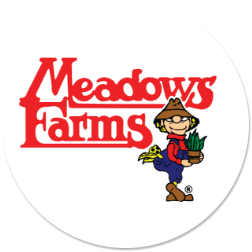

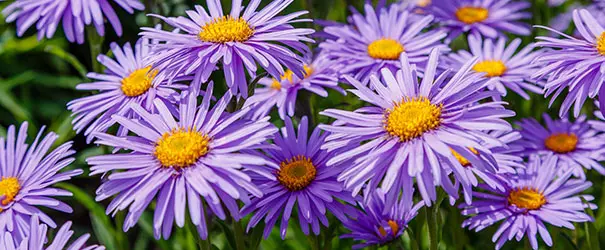
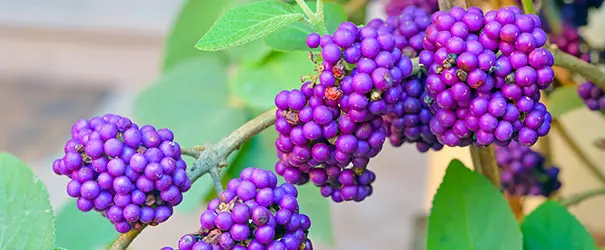
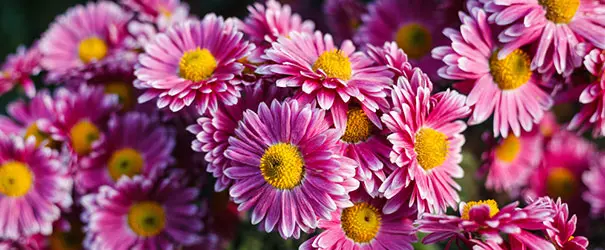
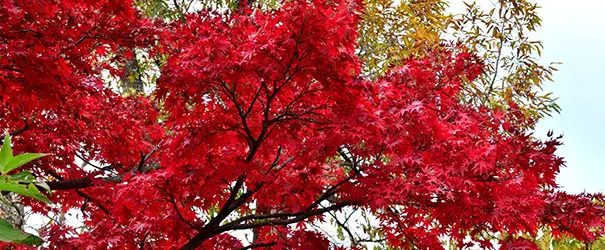
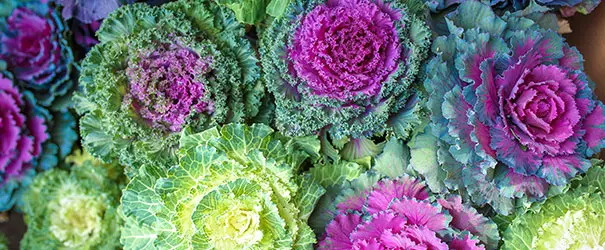
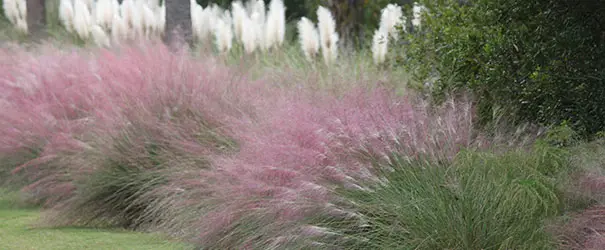
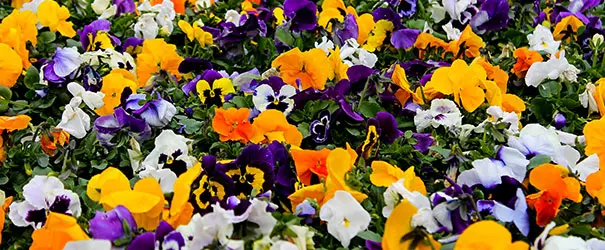
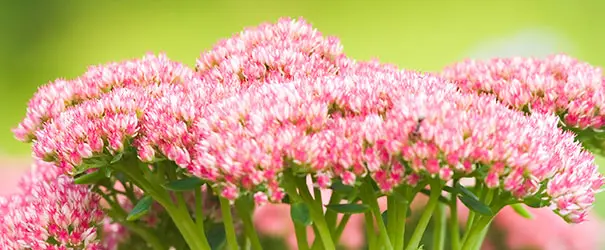
What are prices on pansies?
Currently, we have pansies in 4.5″ pots which sell for $2.49 each. By the end of this week, we will be receiving our first shipment of 6.5″ pansies which will retail for $4.99 each or $4.49 if you buy ten or more.
What fall plants do good in shady areas?
Most of the plants on this list can handle partial shade very well. For deeper shade, a good perennial would be Snakeroot, particularly the ‘Black Negligee’ variety. They have a lovely burgundy foliage throughout the growing season and have long stalks of white, plume-like flowers in the fall. Also, you can never go wrong with Heuchera. They provide fantastic color for shady areas no matter the season.
ornamental cabbage and kale
r they deer resistant
While it’s not unheard of for deer to eat ornamental cabbage and kale, many customers have had good results planting them in areas where they can no longer plant pansies due to deer. I’d say they are worth a shot. 🙂
These are lovely. I must come in to your Rt. 1 store and buy pansies, mums and sedum.
Absolutely! They should have all of those in stock and ready for planting. 🙂
What size and price are your beauty berry plants? Thanks!
Hello, Linda. Currently, we carry our beautyberries in 3-gallon pots and they retail for $29.99 each.
That’s great! I live near Leesburg–do you have any beautyberries there? Thanks!
It looks like our Leesburg store has a few 3-gallon Early Amethyst varieties in stock. I would call them to verify just to be sure though. 🙂
Hey, Mike. I recently planted up some pansies and little bunny mountain grasses into planters. While I like the way they look, I feel like I’m missing a trailing element. Are there any interesting vines that would provide some additional autumnal interest?
Hey, Sarah. First off, thank you for checking out the blog and sending in a question. In terms of trailing elements for your planters, we have a few that work great for the fall season. Creeping Jenny is a great addition that can add trailing interest to your container and does great in the fall. Another great option is Sweet Potato Vine. Many of our locations have them in 4″ pots and they complement pansies and grasses very well in containers. Either of these would be a great option for you.
Mike, thank you so much for your suggestions. I can’t wait to put the finishing touches on my planters. On another note, these blog posts are super helpful and provide me with some much needed inspiration. I really appreciate all the hard work you all put into them.
Do you have any Japanese Maples at your Fredericksburg, VA store? What are their prices? The smaller the tree, the better. Thank you.
Hi, Adrianna. We have a few 3-4 foot-sized Japanese maples at our Fredericksburg location. They run around $99.99 each. Unfortunately, we don’t have anything smaller than that, but we may get smaller ones for the spring season.
Hi Mike,
I’m also interested in the Japanese Maples and I’m near I guess it would be the Gainesville store. What would be their smallest size and their price? Is that the sales price?
Hi, Sheila. It looks like the smallest size of Japanese maple that our Gainesville store carries is a couple of 18-24″ red weepers which normally retail for $79.99. However, with the current clearance sale going on all of our Japanese maples are currently 75% off.
I’m looking for a good shade tree. Would the bloodgot be a good choice. I have several maples in my yard already but they are off to the side . Thanks
Bloodgoods are a good choice. They offer good shade once they get to a mature size and their fall color is fantastic.
Sweet potato vines are a good choice for pots and can be used as an annual ground cover. However, the deer may be a problem. I have had them decimate this plant unless protected with deer repellent.
Do you have any beauty berry at the store off 234? Any suggestions on how to prune barberry plants without being a pin cushion
Hi, Mellissa. It looks like our store off of 234 has about 6 Beautyberries in stock, though I would give them a call first to verify that. As for pruning barberry, that are not that many ways to keep from being a pin cushion. I would invest in gloves that go up the length of your forearm to give you extra protection while handling the limbs. That seems to be the best solution for me, as with regular gloves I tend to get pricked underneath the fold quite a bit.
Hi Mike,
I have Otto Luken laurels in semi-shade. They have died on me. I’m seeking to replace them with colorful and nearly maintenance-free shrubs. The laurels are 36+ inches high, and because of the landscape design, I have to replace with plants that are at least 18 to 24 inches high and fairly fast growing. What do you suggest?
Lois
If you like the look of your laurels but want something a bit more colorful, you could always try Mountain Laurels. They grow great in the shade and have very attractive blooms throughout the late spring and early summer. Pieris japonica is also a fine choice, as it has small, bell-like blooms in spring mixed with new foliage growth that emerges bright red before shifting to green. For a non-evergreen option, hydrangeas are always a good option for color as well.
When is the ideal time to plant ornamental grasses?
Any time throughout the spring or fall is a good time to plant grasses. Right now is a great time with the cool temperatures and rainfall. It will give the grasses a few seasons to establish their roots before the heat of the summer comes back.
Hello!
I would like to find a compact perennial that will add color or bloom during the colder months for our neighborhood entrance garden. Do you carry dwarf asters or mongolian stonecrop? Or have another suggestion? Must be a perennial. I shop at the Harpers Ferry WV location.
Thank you.
Karen
Hi, Karen. I would actually reach out to the West Virginia store directly. They have more knowledge than I do on what items they have in stock currently, and they can give you direction on substitute items they may have in case they don’t have the varieties you’re looking for.
I was told that dogwood trees should be planted in the Spring not the Fall Since I wound like to plant now, would Redwood be a good substitute. The area is mostly sunny. Do you have a better suggestion of a mid-size tree?
My previous request is about a Redbud tree, not a Redwood.
A redbud would be a fine replacement if you don’t want to plant a dogwood. I will say that dogwood can be planted both in the fall and spring. I prefer planting in the fall because it’s cooler, so there’s less transplant shock. Also, planting in the fall gives the tree three seasons of root growth before the summer heat comes again. This helps with watering requirements. But regardless, you can’t go wrong with a redbud if that is what you’d like to plant instead.
Hi – this is so helpful!
I had three acuba plants – 5feet high – but two died off – maybe from frost? So the very shady front of the house looks like it’s missing teeth. Two big blank spots and then one acuba.
It’s Light grey house with a lot of azalea to the side – I’m looking for something that might give darker year-round color, that starts around 18-24″ and can handle lotta shade and clay soil (it stays dry generally – not soggy). Also something that isn’t shaggy but fills out the space. Thank you so much!
A lot of people like using Otto Luyken laurels in very shady areas. You can get them starting at the 18-24″ size required, and they are very easy to maintain at a particular height. They tend to form more like a hedge, so they don’t get too out of control. They’re evergreen, and their leaf shape resembles an aucuba, just without the spots.
Is there a particular variety of Crapemyrtle that will thrive in some shade better than other varieties? When is the best time to plant?
Are the ornamental cabbage and kale perennials? Do they prefer sun, partial shade or shade?
They are not perennials. They will last into the colder parts of fall and early winter, but will eventually fail once we begin to see hard freezes. They do best in full sun (at least 6 hours), but can handle a little afternoon shade as well.